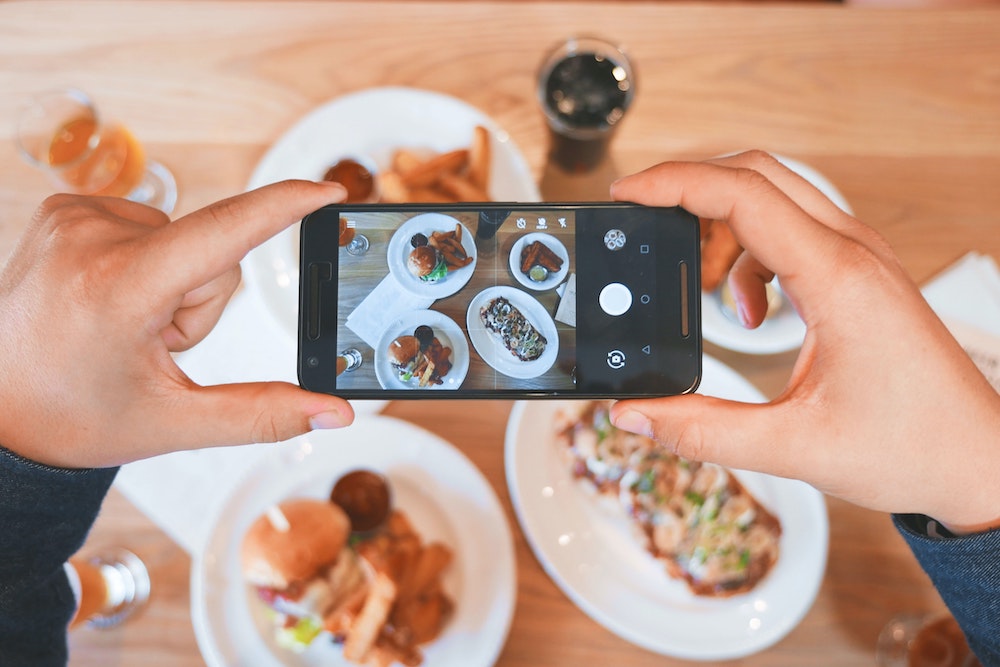- If social media is unfamiliar territory for you, find an expert who can guide you through the best practices.
- Use social media to personify your brand and give people something to relate to.
Related: How to grow your pizzeria business without using social media
For many potential customers, your pizzeria’s social media presence will be their first introduction to your brand. And we all know that first impressions are lasting impressions. Too many restaurant operators set up a Facebook or Instagram page and then forget about it, failing to update it regularly and paying no attention to comments from followers and fans. Others post something every day but focus almost exclusively on self-promotional messages that don’t engage their audiences.
First and foremost, social media is about engagement. Social media sites allow restaurants to connect and interact with existing and potential customers. These sites provide rich opportunities for you to keep your customers continually updated about your pizzeria while engaging in active conversations with them and promoting brand awareness. Even better, social media makes it possible for you to listen closely to what your customers want and need. The overall result is that your customers and fans associate your brand with a positive, rewarding experience even when they’re not actually eating in your restaurant.
All of these social media platforms—including Facebook, Twitter, Instagram and TikTok—are free, but it takes strategic planning to get the most value when you use them. Here are 10 tips for using your social media to attract more fans to your brand:
- Partner with a trusted expert. If social media is unfamiliar territory for you, find an expert who can guide you through the best practices. Many restaurants employ social media managers, but expert consultants are also available. Before hiring a professional, ask for references and case studies. If you can’t afford to create a salaried position or hire a consultant, consider giving the task to a younger manager or staff member who’s well-versed in social media and has a solid understanding of your brand, social media strategy and goals, and the ability to communicate effectively with the written word.
- Clarify your brand. Branding is all about recognition. How will your customers know that you are you and not one of your competitors? Social media is a way for customers to know you, like you and trust you. And the “you” they’re getting to know, like and trust is your brand. In other words, your brand is the story of you. It’s everything about you that sets you apart from your competitors.Moreover, in social media, there are a few elements of branding identity that are not necessarily applicable in other kinds of marketing, such as your tone or voice. For example, do you communicate with humor? Are you straightforward and direct? Do you tend to be chatty? Without a differentiated brand identity, you are a commodity, like milk, gas or Chinese takeout. You get the sale only if you happen to be the closest or the cheapest when your customer is ready to get a pizza. On the other hand, if your pizzeria is perceived as a distinguished brand, your customers will travel for many miles or pay more just to eat your pizza. That’s how you generate repeat business and cultivate customers who will promote your products for you.
- Tell your story. Gather all of the information about your brand that you want to convey and write it down. This is an essential step if you’re going to hire a social media manager to do this work for you, but it will be just as helpful if you’re taking on the job yourself. How long has your pizzeria been in business? What’s the story behind it? What makes your pizza different from your competitors? Pizza fans love to know the history of their favorite pizza restaurants, so be ready to share it with them. Create descriptive paragraphs that cover the important facts about your pizzeria. Do you use a wood-fired oven? Do your recipes date back to your Italian great-grandmother? Do you source most of your ingredients from local farmers? Do you have a strong selection of craft beers? Hit the high points in your descriptive copy, and use keywords that customers will use when they’re searching for a pizzeria online.
Related: Derrick Tung of Paulie Gee’s Logan Square shares four tips for social media success
- Take great photographs. Social media is a visual medium as well as a verbal one. Bring in a talented photographer to capture vivid images of your most delicious-looking pizzas. Also take photos of your pizza makers and waitstaff in action. Show some personality and flair! You want your customers to get to know you on a more intimate level, and great photos will help. Post these photos occasionally along with your other regular updates. Make this an ongoing project, and be consistent. The goal is to convey a sense of your pizzeria’s atmosphere and personality as well as its great food!
- Act like a friend. Do not shout. Do not broadcast. Do not brag. Speak like yourself—not like a corporate marketing shill or press secretary. Personify your brand. Give people something to relate to. People like to do business with people they know, not with faceless corporations. If another staff member posts on your behalf, make sure that the person knows how to craft engaging, entertaining posts with correct spelling and grammar.
- Involve everyone. Make social media a team effort. Get your team together, discuss the options, devise strategies and make sure everyone’s on board. Even if you don’t use social media a lot, your employees probably do. Ask them to invite their friends to “like” your pizzeria’s Facebook page or follow it on Instagram and TikTok. Encourage them to share your posts and videos on their own pages. Solicit their ideas for reaching more people and attracting more fans. Make them feel vital to your social media mission, and they’ll want to help.
- Share videos. Create how-to videos for people who want to learn to make great pizzas at home and share a few of your best recipes. Shoot brief videos of a pizza-maker tossing dough or the waiters clowning around in the kitchen. TikTok is an increasingly popular social media site for these kinds of videos, which encourage creativity and originality and have become quite popular with younger users.
- Show the human side of your business. Post or tweet about social causes and charity events that matter to you and your pizzeria. Promote good causes whenever possible and show that you care about your community and your customers.
- Ask for feedback from fans and followers. One of the biggest advantages of platforms like Twitter, Instagram and Facebook is the ability to communicate in real time. This makes it possible for pizzeria owners to find out about complaints or problems sooner and respond quickly with a solution.
- Run contests. With prizes such as free pizzas or appetizers, you can use the contests to encourage fans to promote your brand to their friends by liking and sharing your posts.
 |
|
It’s worth it to invest a little money in high-quality food photography. Social media posts with pictures of your best menu items will draw attention and get customers in the mood for your food. |
Finally, no article about social media would be complete without examples of what not to do. If you make these mistakes, you could lose money and suffer a great deal of humiliation. Here are some common no-no’s that you’ll want to keep in mind:
Do not:
- Connect with a bunch of random people. Why bombard folks who will never eat at your pizzeria? Build your followers geographically—it’s easy to do, and you can start with your own friends and family members and by asking your staff to invite their friends and relatives as well.
- Confuse your followers about who you are. If you have multiple profiles with contradictory information—such as old addresses or phone numbers, outdated menus, etc.—you’ll just confuse your customers. If you’ve got multiple social media accounts—such as Twitter, Facebook and Instagram—make sure they’re all consistent with each other and with your brand.
- Post too many self-promotional messages. If you flood your Facebook followers with too many sales messages, your prospective customers will tune your posts out or, worse, drop you like a hot potato. Use this powerful medium wisely!
- Post too few self-promotional messages. On the other hand, if you are shy about letting your fans know what you have to offer, you will not maximize your return on investment. Throw in a healthy mix of promotional and just-for-fun messages to engage your audience!





